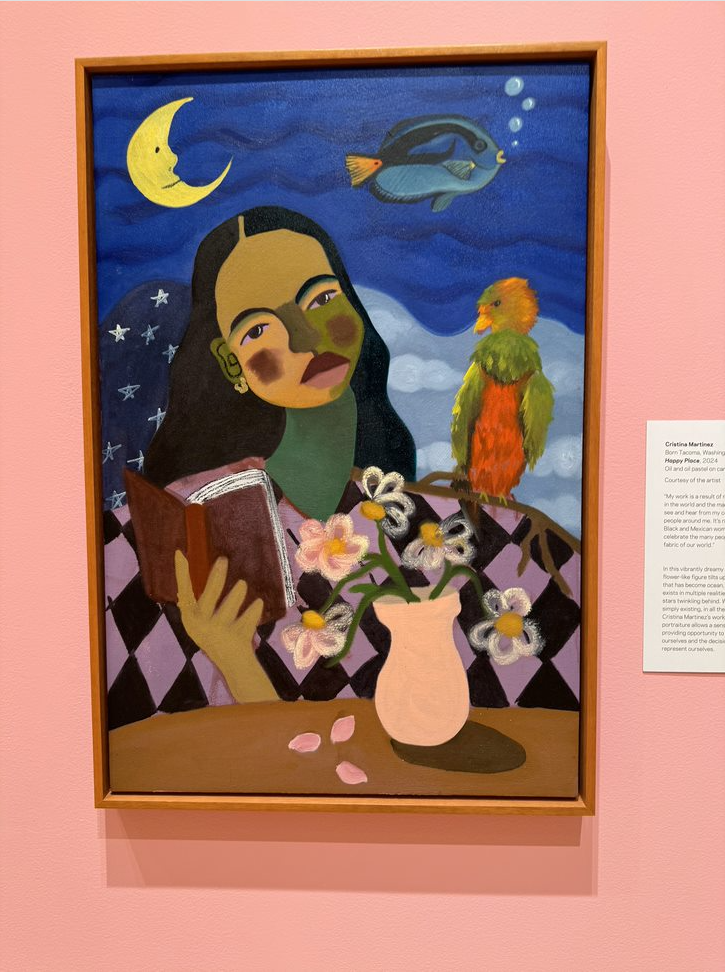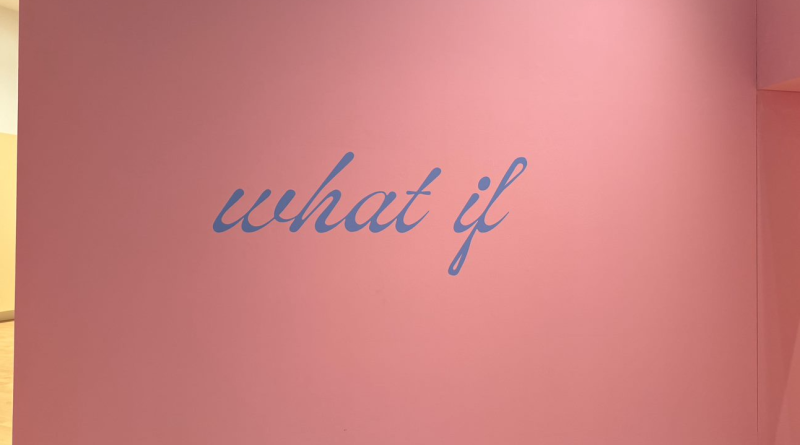“What If” exhibition aims to bring awareness to what “Black artwork” is
The Tacoma Arts Museum’s “What If” exhibition aims to encourage artists to think beyond the limitations of what Black artwork means through curiosity and imagination.
What does interiority mean to you? How can you represent inner thoughts and feelings through narratives? What misconceptions hold back artists from accurately representing their authentic self?
The “What If” exhibition at Tacoma Arts Museum (TAM) aims to explore these topics through self-exploration and curiosity. It provides a space for Black artists to show their artwork without stigmas and misconceptions towards their art.
According to the TAM website, the exhibition was based upon the book of essays titled “The Black Interior” by Author Elizabeth Alexander. In it, she defines what is called the black interior which is where black artists can imagine themselves and others how they want to be without any limitations placed upon them by others or themselves. Black artists face a plethora of stigmas and misconceptions that society created attached to their artwork. Whether it be in their music, film, writing, or dancing.
What is Black artwork? How do Black artists define their art? Having several different artists showcased at the exhibition, people can view how immersive and creative people can be when society doesn’t create limitations. Despite the perception of Black art from a historical perspective, people can imagine numerous ways to represent their authentic self and explore their creative freedom.
Playing with ideas like time, culture, tradition and much more, “What If” aims to create an open space for Black artists to thrive as their authentic self.

Much of the artwork showcased is done by local artists in the area. The piece “Happy Place” by Cristina Martinez reflects how personal experiences and authentic stories from different communities consider how we perceive ourselves. Martinez, who is a Tacoma native, innovates new styles and methods of reflecting her authenticity as a Black Mexican American.
In the painting, you see a young woman made up of abstract looking shapes and sizes staring up into the dark blue sky. She is holding a book in her hand while a tricolored parrot sits on top of her shoulder. The girl appears to be in a dream-like place where the water meets the sky. A bright yellow crescent sits on top of her while a blue flattened fish swims behind blowing bubbles. The portrait seems to emulate a subconscious place where our thoughts emerge.
Abstract art is often meant to reflect a moral dimension rather than a coherent accurate idea. Shapes and colors help create a feeling or idea that’s familiar to us. Martinez uses a mixture of brightly colored shapes and bold lines to reflect the profound effect our imagination can have. Despite the dream-like world the girl is in, she is the only thing that remains unchanged.
Another picture that captured the interiority of theauthentic self was the portrait “Self Portrait Tapestry” by Le’Ecia Farmer. The portrait features a young Black woman staring into the face of the viewer. Her eyes, being the focal point of the picture, reflect depth and intensity. The figure is laid across a bold tapestry of different colored squares.

The material is fabric and appears to be woven together. According to the artist, the portrait was meant to reflect the symbolic effect that textiles can have on us. In an interview with redefinemag.net, Farmer says “in making artwork, I don’t really care if I’m understood or not to be honest. But I am practicing this language: textiles as language; intuition as language; experimentation as language; play at language; play as language.”
The figures darkened skin across the bold tapestry also reflects the historical significance of Black individuals. Black Diaspora has played an integral role in American history for decades. These strong images of Black individuals can evoke powerful emotions when tied to the material they may have worked with at the time. It’s a play on many different topics and culturally sound ideas. Farmer forces the viewer to think outside the box and consider the literal and objective ideas attached to this portrait. It asks the viewer; what is the woman trying to say?
Several other pieces at the exhibition reflect a similar phenomenon of having viewers wonder what employs artists to create a story about themselves of their interiority. What would it look like if they imagined artwork beyond a world of racial interpretations? Hence, embodying curiosity is at the center of this perspective and implores us to think beyond the limitations we create for ourselves and others.
If you would like to view this exhibition, you can do so by visiting the TAM website to purchase a ticket: https://www.tacomaartmuseum.org/exhibit/what-if/details/



